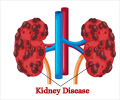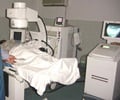New research shows that a new biomarker-based diagnostic test is more effective than the current best practice for early detection of adverse outcomes after acute kidney injury (AKI).

Results of the retrospective study – which included pooled data from 2,322 critically ill adult and pediatric patients – also justify recommending a reassessment of what defines AKI, according to researchers from 13 international medical organizations collaborating on the study.
"This study describes a new biomarker (NGAL) that completely outperforms the current serum creatinine-based criteria for the early detection of AKI and its devastating clinical outcomes," said Prasad Devarajan, M.D., director of Nephrology and Hypertension at Cincinnati Children's Hospital Medical Center, and one of the study's first authors. "This has enormous implications because AKI affects about 30 percent of all critically ill patients, in whom current therapeutic options are limited and unacceptably delayed."
The critically ill patients whose data researchers analyzed primarily had Type 1 cardiorenal syndrome, a common condition in which heart dysfunction causes kidney injury. The researchers were surprised to learn that 40 percent of the patients showed unexpected early increases in urine or blood NGAL levels, but no increases in serum creatinine.
Even more unexpected was that those patients with early increases in NGAL concentration had a much greater risk of adverse medical outcomes than patients who tested negative for NGAL. NGAL positive patients were 16 times more likely to need dialysis, three times more likely to die during hospitalization, and on average they spent three extra days in intensive care and eight extra days in the hospital.
"We concluded that these substantial numbers of patients might reasonably be classified as having sub-clinical AKI, even though they do not fulfill current creatinine-based criteria for AKI," Dr. Devarajan said. "Our findings dictate a need for complete reassessment of the very concept of and diagnosis of AKI. They also point to an urgent need for testing whether NGAL-based early diagnosis of AKI can lead to timelier deployment of therapies and improved outcomes."
Advertisement
"Our findings suggest an important analogy between the troponin/creatine kinase relationship in acute myocardial infarction and the NGAL/creatinine relationship in AKI for the identification of previously undetected organ injury," said Dr. Bellomo, director of Intensive Care Research at Austin Hospital, and senior author of this study. "Just as the increased diagnostic sensitivity of troponin has dramatically altered the definition, diagnosis, and management of acute myocardial infarction, similar concepts might apply to NGAL and AKI."
Advertisement
Source-Eurekalert















